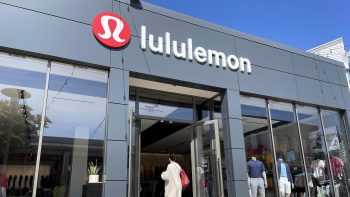America may have thrown off the yoke of British imperialism, but British ways still seem to have a way of insinuating themselves across the Atlantic. Plaid (or tartan, as His Royal Highness calls it), is back. That’s what retailers are telling Marketplace reporter Stacey Vanek Smith today.
Expect to see colorful criss-cross patterns everywhere this fall, Stacey reports.
It’s in everything: hats, scarves, handbags, belts, dresses and even shoes. It’s the grunge trend again. This is a tough economy, so they’re going for a more relaxed style than giant handbags and high heels. Retail is in a terrible state, and back-to-school has to work for them. The only way to get people to buy is to start a trend and inspire them to buy.
That’s right, kids all over the country are in danger of going back to school dressed like Charles and Camilla, or, worse yet, the Bay City Rollers. But seriously, if this move into plaid pays off for retailers, it could be great news for British fashion house Burberry, which started lining its raincoats with what it called “haymarket check” in the 1920s. The check turned into a kind of uber-plaid, lusted after by American and Japanese visitors to London in the 60s and 70s. It was about this time that upper-crust Brits began to look upon the check as somewhat non-U, and some members of the less-well-cushioned classes started wearing the plaid at football (soccer) games.
Burberry relaunched and went public in 2002, but by this time, its signature check had been adopted as a kind of trademark by so-called “chavs”, or delinquents. The baseball caps, shirts and miniskirts worn by these young people are often copies of the Burberry plaid, and thus a trademark infringment, but unfortunately for Burberry, the brand has become tainted by association in Britain.
In other countries, however, the brand has managed to avoid any association with hooliganism, and the company’s raincoats, scarves and shawls remain popular. But not popular enough to stop the company from reporting a $10 million loss for the first quarter. Sales dropped 14% here in the U.S., and 15% in Spain.
But even though arguably the most famous plaid in the world is suffering in this tight economy, retailers are undeterred. It’ll be check lapels and tartan trousers for everyone this fall, making us ask the question, is plaid the retail industry’s Hail Mary? Stacey’s story airs this evening on Marketplace.
There’s a lot happening in the world. Through it all, Marketplace is here for you.
You rely on Marketplace to break down the world’s events and tell you how it affects you in a fact-based, approachable way. We rely on your financial support to keep making that possible.
Your donation today powers the independent journalism that you rely on. For just $5/month, you can help sustain Marketplace so we can keep reporting on the things that matter to you.


















